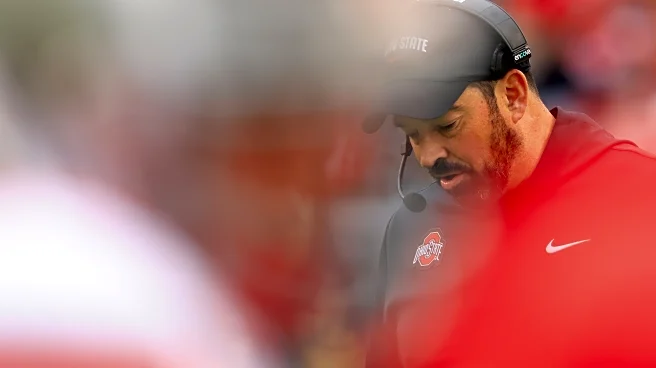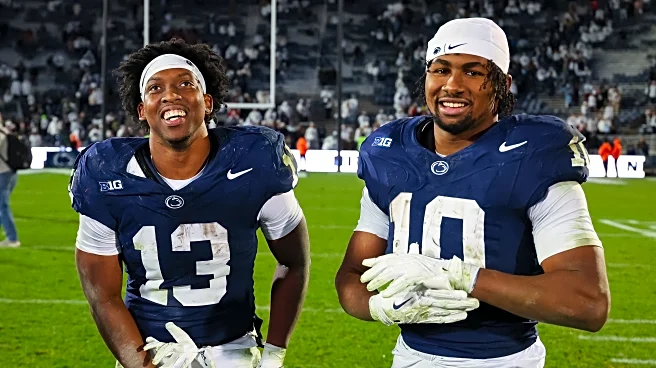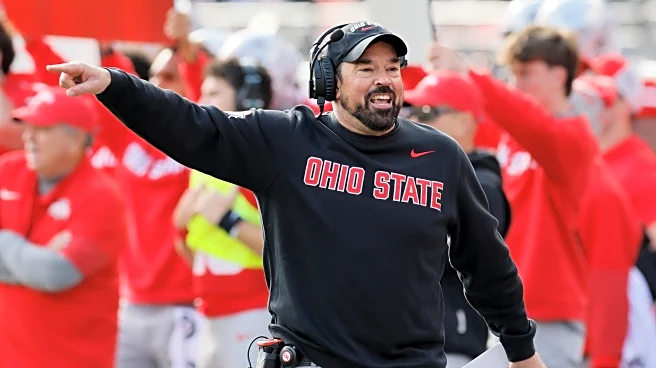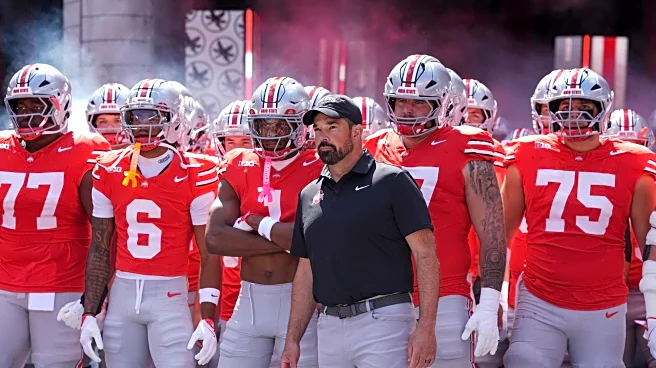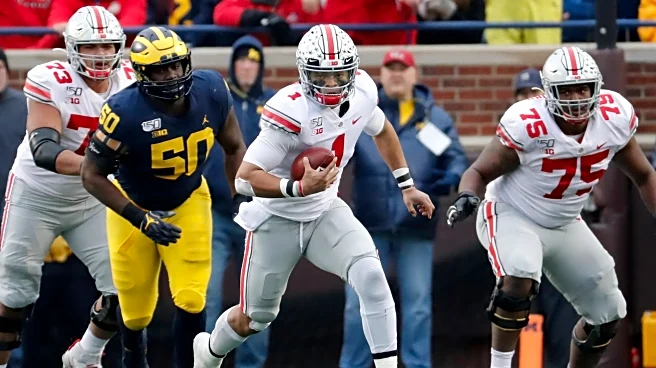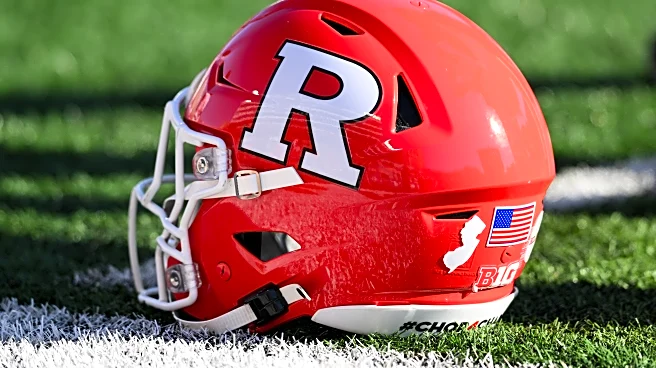For the past few seasons, the run game has seemingly been the Buckeyes’ undoing against their rivals up north, particularly last season.
Despite an Ohio State team that outmatched the Wolverines on paper
and exceptional talent in the 2024 running back room, inept play-calling and a baffling determination to run the ball up the middle and straight into Michigan’s defensive line factored significantly into the Buckeyes’ 13-10 loss. It was a miserable day in Columbus.
The issue isn’t limited to last season—the Buckeyes haven’t beaten the Wolverines since the 2019-2020 season, marking four straight matchups of misery for us fans (The Game was cancelled in 2020 due to COVID), and the run game has factored in for most of those matchups as well.
Given the struggles with the rushing game this season, there are three possible paths for Ohio State on Saturday. Only two of them have happy endings for the Buckeyes. Let’s break them down.
Option 1: History repeats itself
With wide receivers Jeremiah Smith and Carnell Tate still questionable for Saturday’s big rivalry matchup, there is a world in which the Buckeyes have no choice but to rely on their run game.
However, if we see more of the same play-calling from the Buckeyes, with an insistence on running the football even when it’s not working or choosing to run routes that are consistently shut down by Michigan’s defensive line, the fine folks of Columbus should probably strap in for a miserable afternoon.
Michigan’s defense is stout, ranked 17th in total defense, and more concerningly, 11th in the nation in rushing defense, allowing an average of 2.98 yards per carry. They have allowed an average of just 94 rushing yards per game.
Compare this to Ohio State’s run game this season: The Buckeyes are ranked 56th in rushing offense nationally, averaging 4.95 yards per carry and 170.18 yards per game. Though the ground game has started to pick up steam at exactly the right place in the season, the Wolverine defense is arguably the best defense the Buckeyes will have faced in conference play, and predictable play calling would be enough to grind any momentum on the ground to a halt.
The bad news for the Buckeyes, then, is that in the last 23 matchups with Michigan, the team that gained more rushing yards won the game, and in addition to their defense, their rushing offense is top-ten in the country. The good news is, Ohio State’s rushing defense is even better than Michigan’s, ranked 2nd in the country and allowing just 2.67 yards per carry (and four touchdowns to the Wolverines’ 11), and the boys from Ann Arbor haven’t faced a defense of this caliber yet.
Still, OSU shouldn’t go into The Game with “The defense will take care of it” as the game plan. They need to figure out how the run game is going to factor into a successful offensive strategy as well.
If the Buckeyes do need to rely on their run game, Bo Jackson will most likely find himself carrying the ball and The Game on his shoulders. Jackson has been the most dynamic of the running backs this season, leading the team with 835 yards on 129 carries, along with five touchdowns.
Week after week, he’s gotten better and become a leader on the field despite being only a freshman. However, to set Jackson up for success, the playcalling cannot be anywhere near as predictable or inept as it was last season, or it is extremely likely that Michigan is going to shut that down faster than you can say, “O-H!”
Option 2: The run game steps up when we need it most
Look, if we’re relying on our run game Saturday, one of two things is true: Our wide receivers are unable to play or Ryan Day needs to have his head examined. The only world in which it is acceptable for the Buckeyes’ dominant offensive strategy to be its rushing game in this particular season is if Smith and Tate are not on that field.
If it comes to that, there is always the possibility that the run game will step up when we need it most. It would be a little funny, wouldn’t it? To flip the script and have the running backs be the heroes in arguably their weakest season in recent memory against a team that thrives off containing Ohio State’s running backs?
The reality is, without Smith or Tate, the offensive options are limited: With both receivers out for the better part of two games, OSU’s passing game has looked sloppy and out of rhythm.
The best bet becomes the run game. Jackson and Co. will need to play near-perfect football, but there is hope for them: Despite its excellent run defense, against the highest-ranked rushing offense the Wolverines faced this season (USC, ranked 44th in the nation in rushing offense), Michigan gave up more than double the rushing yards it earned.
The Trojans put up 224 rushing yards on the Wolverines, and arguably, the margin of difference between the Trojan run game and the Buckeye run game isn’t massive. Perhaps Michigan’s numbers are more a reflection of a weaker schedule than actual prowess.
So maybe, just maybe, the run game will peak at the exact right time, proving themselves when it counts after taking criticisms in stride all season.
Or maybe…
Option 3: Ohio State stops trying to force the run game
Something I’ve been thinking about for a long time is whether the run game being an offensive weakness this season could actually be our greatest strength in Ann Arbor. While Day has praised the improvements we’ve seen in the past few weeks, he’s also acknowledged the inconsistency of this year’s run game throughout the season.
If Tate and Smith are able to play, the Buckeyes are able to use a far more balanced—and even, dare I say, pass-heavy—offensive strategy. In this absolute best-case scenario, perhaps because Day is aware of the rushing attack’s shortcomings, he will feel less inclined to try to force it.
We’ll still need to run the ball strategically, but it won’t necessarily be the piece of the puzzle on which victory hinges. (Side question: If OSU relies on the passing game, are they effectively trying to make “fetch” happen? I’m now having an existential crisis about this).
Michigan’s passing defense ranks far lower than its rushing defense (down at No. 52 in the country), giving up an average of 208.5 yards per game through the air against teams whose receivers are not Jeremiah Smith and Carnell Tate.
If Julian Sayin has his top targets, Ohio State should be cooking. The hope is that knowing the passing game is far more reliable than the running game is the type of information that helps the Buckeyes finally get that win in Ann Arbor and break their bad habits for good.


